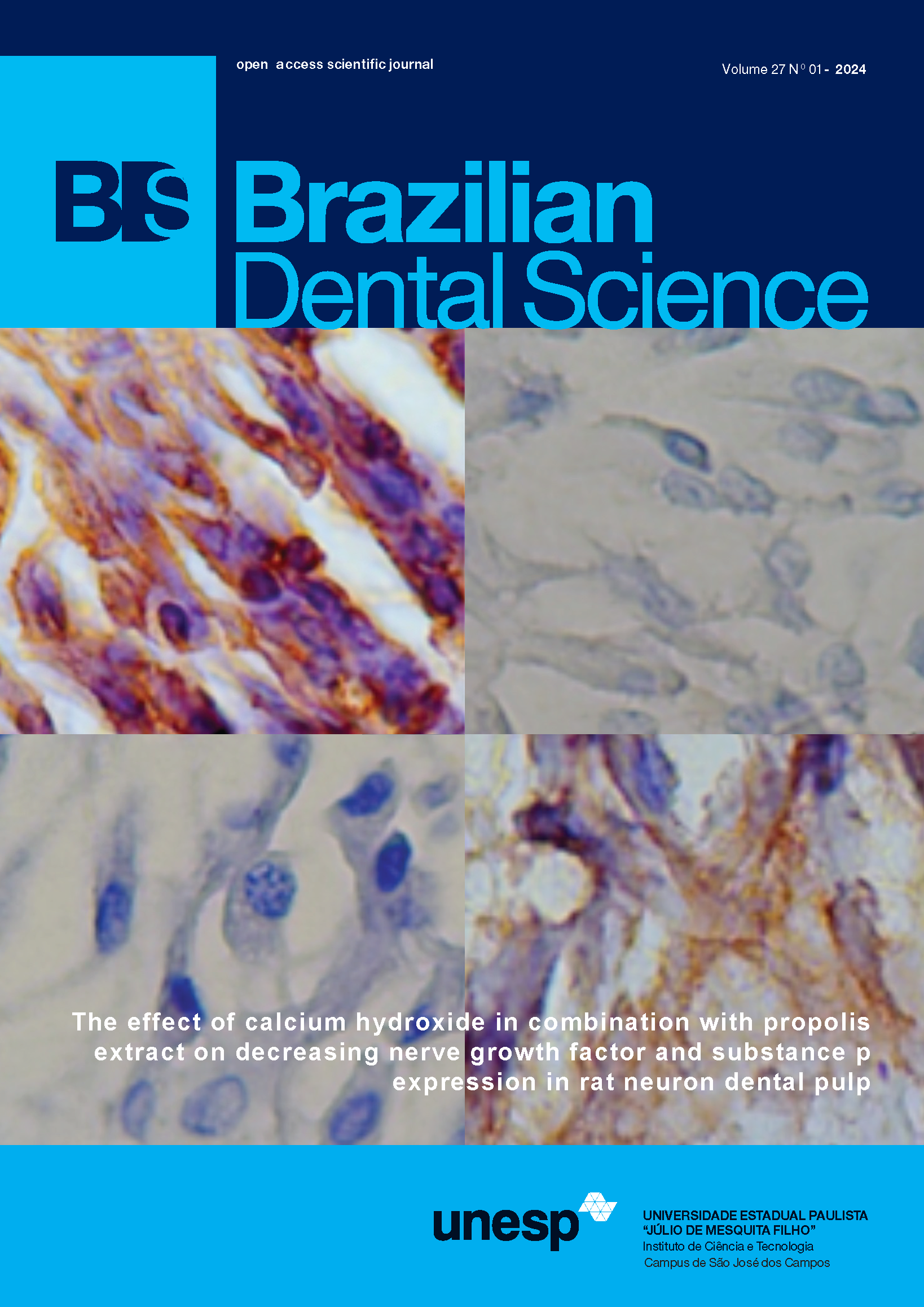Molecular detection of IL-10 level to determine severity of periodontitis in type 2 Diabetes Mellitus patients
DOI:
https://doi.org/10.4322/bds.2024.e3960Resumo
Objective: The prevalence of periodontal disease is increasing in most countries including developing and developed countries. It affects 20-50-% of the global population. Patients with type 2 Diabetes Mellitus (DM) with severe periodontal disease had a 3.2 times higher risk of death than individuals without periodontitis. Periodontitis contributes to small-scale systemic inflammation. The objective of this study was to determine the severity of periodontitis using IL-10 (Interleukin-10) level in type 2 diabetes mellitus. Materials and Methods: This study was cross-sectional. All methods were performed following the guidelines and regulations of the Ethics Committee, Faculty of Dental Medicine, Universitas Airlangga. The samples were 90 subjects. The instruments used were questionnaires, periodontal status measurements based on Community Periodontal Index (CPI), and random blood glucose measurements. Data on the IL-10 level was obtained using Gingival Crevicular Fluid (GCF). Results: There was a significant difference in lifestyle in each group. The highest IL-10 level was found in the periodontitis group, followed by the periodontitis with the type 2 DM group. Conclusion: The level of IL-10 can be used to determine periodontitis severity in type 2 DM. Most respondents with the highest level of IL-10 were found in periodontitis followed by periodontitis with type 2 DM group. High levels of IL-10 will decrease the synthesis of Tumor Necrosis Factor Alpha (TNF-alpha), Interleukin-1 (IL-1), Interleukin-6 (IL-6), activation of macrophages, and Polymorphonuclear neutrophil (PMN).
KEYWORDS
IL-10; Periodontitis; Diabetes Mellitus; Medicine; Health risk.
Downloads
Downloads
Publicado
Como Citar
Edição
Seção
Licença
TRANSFERÊNCIA DE DIREITOS AUTORAIS E DECLARAÇÃO DE RESPONSABILIDADE
Toda a propriedade de direitos autorais do artigo "____________________________________________________________________" é transferido do autor(es) para a CIÊNCIA ODONTOLÓGICA BRASILEIRA, no caso do trabalho ser publicado. O artigo não foi publicado em outro lugar e não foi submetido simultaneamente para publicação em outra revista.
Vimos por meio deste, atestar que trabalho é original e não apresenta dados manipulados, fraude ou plágio. Fizemos contribuição científica significativa para o estudo e estamos cientes dos dados apresentados e de acordo com a versão final do artigo. Assumimos total responsabilidade pelos aspectos éticos do estudo.
Este texto deve ser impresso e assinado por todos os autores. A versão digitalizada deverá ser apresentada como arquivo suplementar durante o processo de submissão.




























